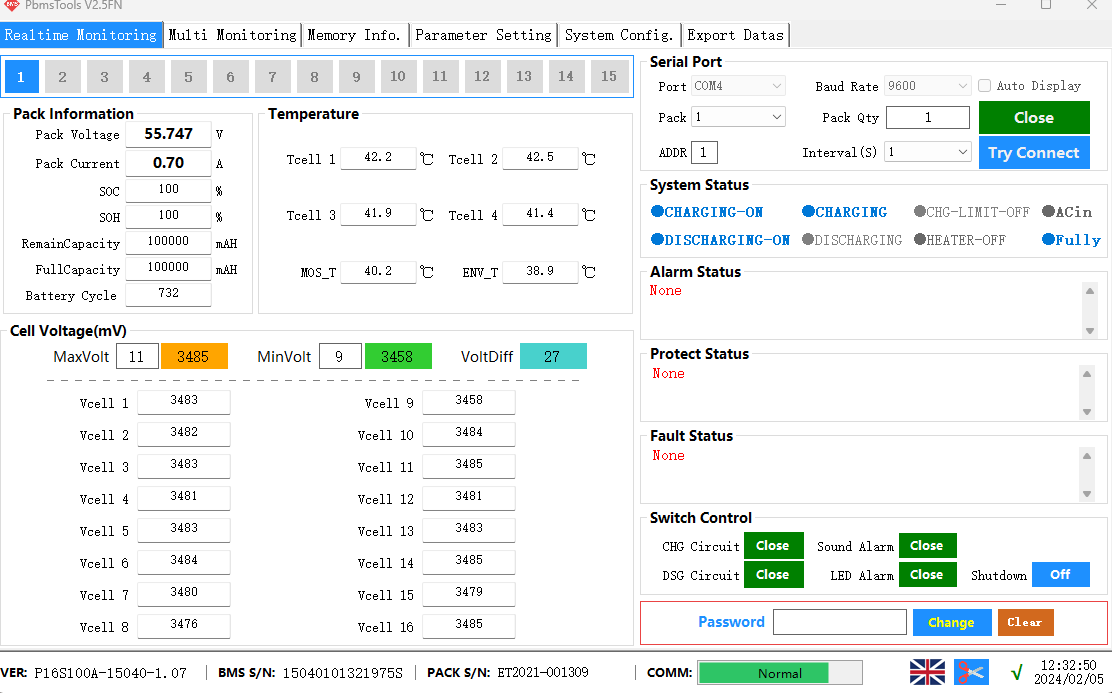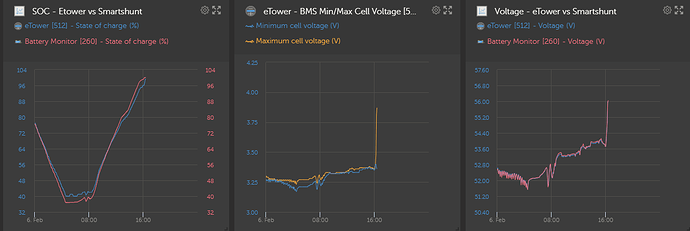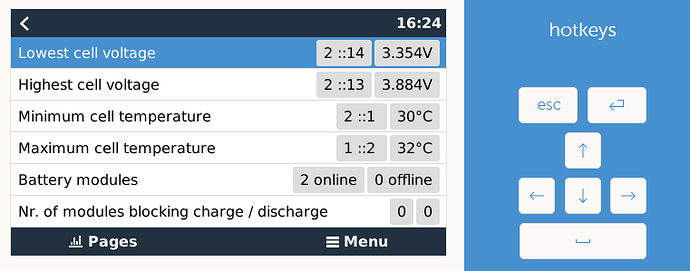I started discussing this issue in another section but decided to bring it here.
I installed 2 x Freedom Won eTowers in December 2021, connected to 2 x 48/3000 Multiplus’s and 4000Wp solar. I had absolutely no issues with the system untill I started getting “high voltage” errors on my GX device November 2023. I logged a ticket with FW after which they remotely logged in and diagnosed both batteries, tracing the problem to cell #13 on the 2nd battery.
After some fiddling with the parameters byt the technician, the errors were gone for just over a month. Suddenly the "high voltage"error re-appeared accompanied by our old friend, cell #13. This time I contacted my installer/supplier who, in turn, contacted his supplier. I gave them access to my VRM site for them to check settings. I got quite agitated after I logged in and saw that my dashboard, widgets and a lot of settings were changed. Everything was set up and installed exactly like the installation manual requires and seeing that only one battery showed the errors pointed in a faulty cell direction. The “good” battery showed a cell difference of no more than 30mV while the other one started exceeding 600mV.
Today FW remotely checked everything again and again fiddled with settings and asked me to keep the batteries charged for up to three days to see if the voltage difference decreases.
The technician did instruct me to swap the batteries so the new one can be adressed as nr.1 and not vica versa like they were. After I asked him what he meant by “old” battery, he pointed out that the one battery (the faulty one) only showed 360 battery cycles on it’s BMS and the other one showed 731 cycles. Seeing that both were acquired and commisioned at the same time, this would be impossible, wouldn’t it? I never cycle the batteries below 40% SOC and only twice they ran below 20% during blackouts, before the inverters switched off at 13%. I would maybe accept the 731 cycles after 2 years but how the hell could the other one, connected in parrallel and being used for an equal amount of time on the same system, have only half that cycles?
I also found that the faulty one showed around 5% less SOC when it reaches levels below 50%. Clearly, according to the PBMS software, cell #13 on the 2nd battery is the culprit, now also giving “low voltage” errors when it nears 30% SOC.
Could it be that the one battery was faulty from day 1? I was always bothered about the usable capacity, seeing that I barely used 5Kwh before the batteries dropped below 40% SOC. I my calculations were correct I should have been able to use closer to 6Kwh before it got to 40%, 8Kwh being usable out of the 10Kwh (If drained to 20% SOC).
Anyhow… I just wanted to share my eTower experience so far. I haven’t got any cold shoulders from FW yet, but let’s see what happens if the cells don’t balance after three more days of charging. I’m down in the Karoo and guess I’ll have to courier the battery to Centurion so let’s see what they bring to the table.
I changed from lead acid to Lithium batteries because I wanted a problem free storage solution and decided to pay a premium for a locally manufactured product. I hope my decision wasn’t flawed…



